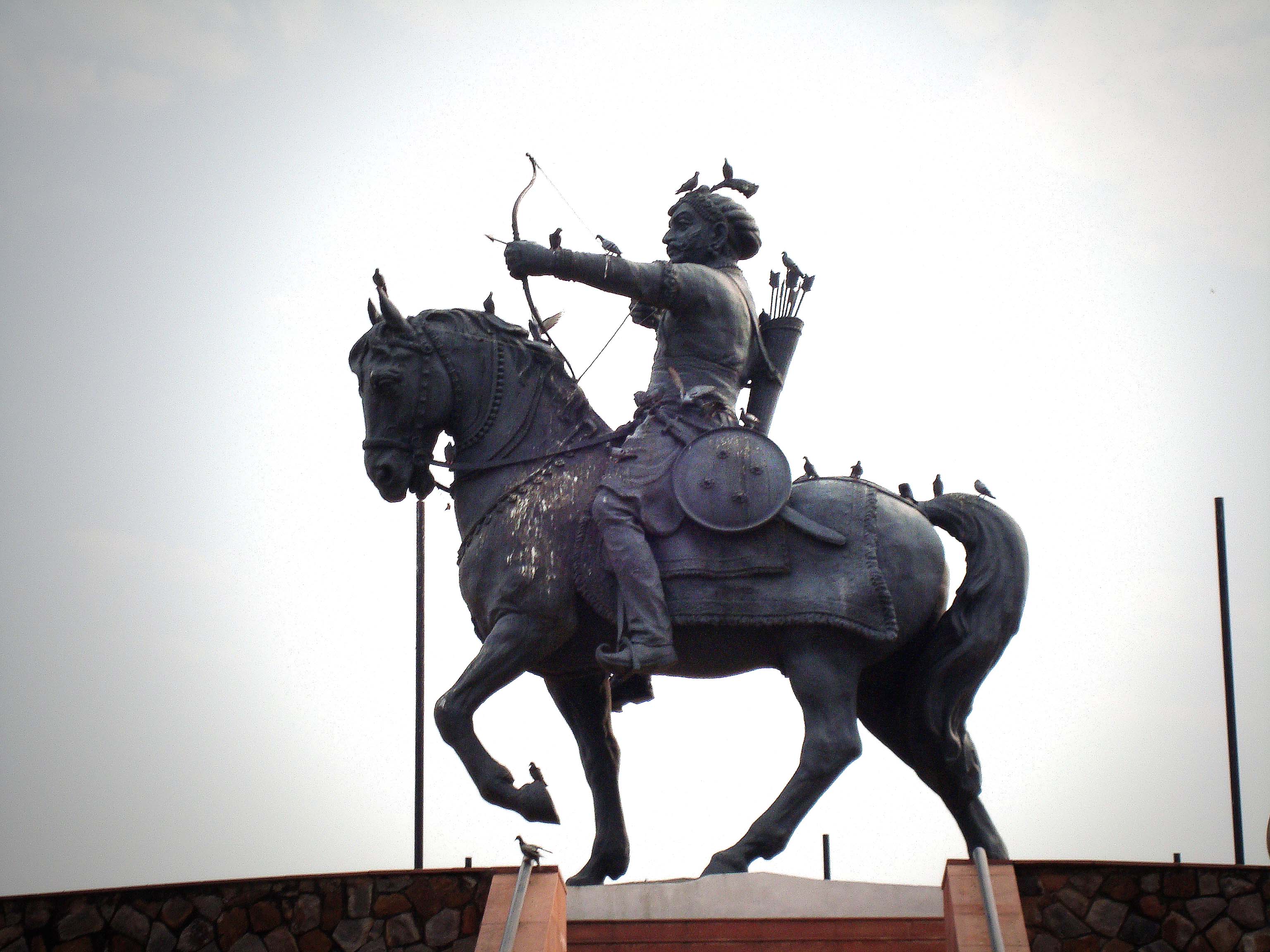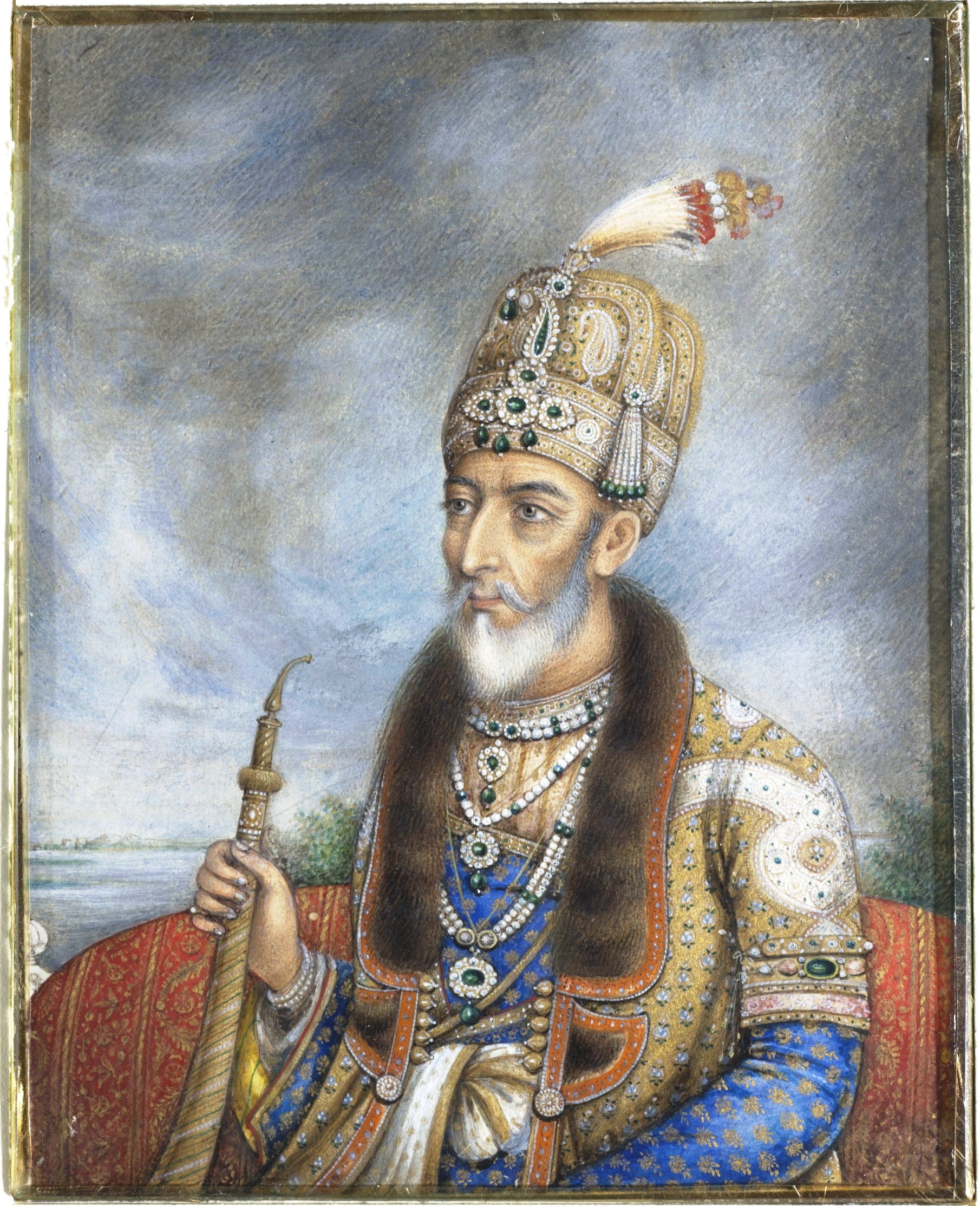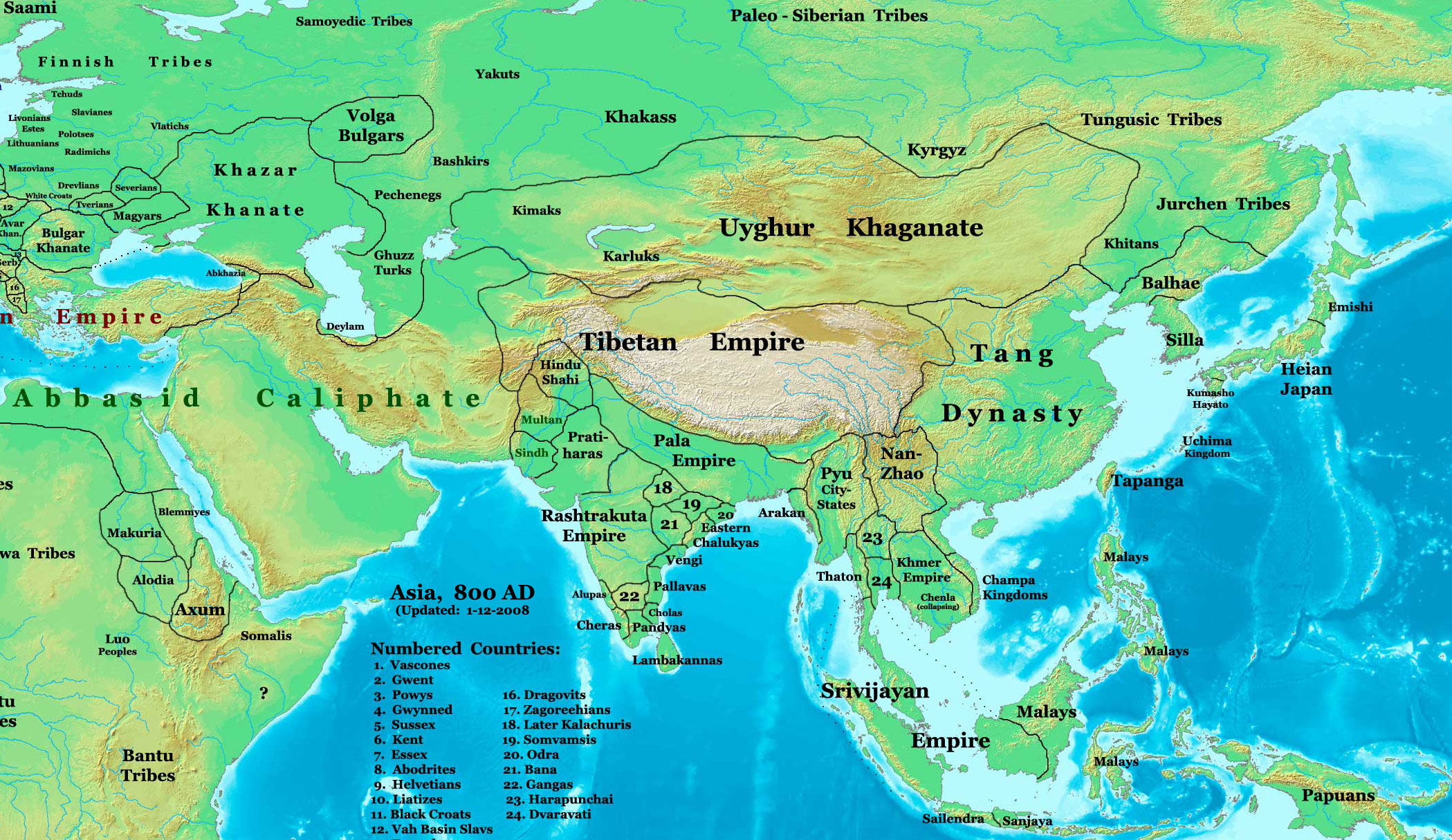|
Vav, Gujarat
Vav is a town and the headquarters of Vav Taluka in Vav - Tharad District in Gujarat state of India. Vav is the largest taluka of the district. History The Rana, rulers of Vav, came from Sambhar and Nadol in Rajasthan, and claimed kindred with Prithviraj Chauhan, who was defeated and slain by the Afghans in 1193. After many turns of fortune, Dedhrav, driven out of Nandol, settled at Tharad, then under the Chaulukya kings of Anhilwad Patan kings. According to other views, his son Rana Ratansing, driven out of Nadol, in 1103, settled at Tharad. Rana Punja, the seventh in descent from Dedhrav was killed by the Muslims in battle in 1283. His son Rana Vaja regained his estate, by the influence of his father-in-law the Raval of Jaisalmer, as a grant from the Delhi emperor but lost Tharad. So he chose his new capital, Vav. Vav gained its name from a step-well built by his great-grandfather Rana Mehpalji. It suffered very severely from the 1813 famine. During the British period, the ... [...More Info...] [...Related Items...] OR: [Wikipedia] [Google] [Baidu] |
States And Territories Of India
India is a federalism, federal union comprising 28 federated state, states and 8 union territory, union territories, for a total of 36 subnational entities. The states and union territories are further subdivided into 800 List of districts in India, districts and smaller administrative divisions of India, administrative divisions by the respective subnational government. The states of India are self-governing administrative divisions, each having a State governments of India, state government. The governing powers of the states are shared between the state government and the Government of India, union government. On the other hand, the union territories are directly governed by the union government. History 1876–1919 The British Raj was a very complex political entity consisting of various imperial divisions and states and territories of varying autonomy. At the time of its establishment in 1876, it was made up of 584 princely state, constituent states and the prov ... [...More Info...] [...Related Items...] OR: [Wikipedia] [Google] [Baidu] |
Prithviraj Chauhan
Prithviraja III (IAST: Pṛthvī-rāja; 22 May 1166 – February 1192), popularly known as Prithviraj Chauhan or Rai Pithora, was a king from the Chahamanas of Shakambhari, Chauhan (Chahamana) dynasty who ruled the territory of Sapadalaksha, with his capital at Ajmer in present-day Rajasthan in north-western India. Ascending the throne as a minor in 1177 CE, Prithviraj inherited a kingdom which stretched from Thanesar in the north to Jahazpur, Jahazpur (Mewar) in the south, which he aimed to expand by military actions against neighbouring kingdoms, most notably defeating the Chandelas of Jejakabhukti, Chandelas. Prithviraj led a coalition of several Rajput kings and defeated the Ghurid dynasty, Ghurid army led by Muhammad of Ghor near First Battle of Tarain, Taraori in 1191 However, in 1192, Muhammad returned with an army of Turkish archery, Turkish mounted archers and defeated the Rajput army Second battle of Tarain, on the same battlefield. Prithviraj was captured and summarl ... [...More Info...] [...Related Items...] OR: [Wikipedia] [Google] [Baidu] |
Public Domain
The public domain (PD) consists of all the creative work to which no Exclusive exclusive intellectual property rights apply. Those rights may have expired, been forfeited, expressly Waiver, waived, or may be inapplicable. Because no one holds the exclusive rights, anyone can legally use or reference those works without permission. As examples, the works of William Shakespeare, Ludwig van Beethoven, Miguel de Cervantes, Zoroaster, Lao Zi, Confucius, Aristotle, L. Frank Baum, Leonardo da Vinci and Georges Méliès are in the public domain either by virtue of their having been created before copyright existed, or by their copyright term having expired. Some works are not covered by a country's copyright laws, and are therefore in the public domain; for example, in the United States, items excluded from copyright include the formulae of Classical mechanics, Newtonian physics and cooking recipes. Other works are actively dedicated by their authors to the public domain (see waiver) ... [...More Info...] [...Related Items...] OR: [Wikipedia] [Google] [Baidu] |
Banaskantha District
Banaskantha district is one of the Districts of Gujarat, thirty-four districts of the Gujarat States and territories of India, state of India. The administrative headquarters and largest city is Palanpur. The district is in northeastern Gujarat where the West Banas River runs through the valley between Mount Abu and Aravalli Range, flowing to the plains of Gujarat in this region. The district is famous for the Ambaji temple which draws many tourists. It has an area of 12,703 km2 and was the second largest district in the state until January 2025, when Vav-Tharad district was carved out of the western part of the district and remaining area of 6,176 km2 remains the same. Geography Banaskantha shares its borders with Rajasthan state in the North, Sabarkantha district in East, Vav-Tharad district in West and Patan district and Mehsana district in the South. Economy It is the site of Sardarkrushinagar Dantiwada Agricultural University. In 2006 the Ministry of Panchayati Ra ... [...More Info...] [...Related Items...] OR: [Wikipedia] [Google] [Baidu] |
Bombay State
Bombay State was a large Indian state created in 1950 from the erstwhile Bombay Province, with other regions being added to it in the succeeding years. Bombay Province (in British India roughly equating to the present-day Indian state of Maharashtra, excluding Marathwada and Vidarbha) was merged with the princely states of Baroda, Western India and Gujarat (the present-day Indian state of Gujarat) and the Deccan States (which included parts of the present-day Indian states of Maharashtra and Karnataka). On 1 November 1956, Bombay State was reorganised under the States Reorganisation Act on linguistic lines, absorbing various territories including the Saurashtra and Kutch States, which ceased to exist. On 1 May 1960, Bombay State was dissolved and split on linguistic lines into the two states of Gujarat, with Gujarati speaking population and Maharashtra, with Marathi speaking population. History During the British Raj, portions of the western coast of India under d ... [...More Info...] [...Related Items...] OR: [Wikipedia] [Google] [Baidu] |
Independence Of India
The Indian independence movement was a series of historic events in South Asia with the ultimate aim of ending British Raj, British colonial rule. It lasted until 1947, when the Indian Independence Act 1947 was passed. The first nationalistic movement took root in the newly formed Indian National Congress with prominent moderate leaders seeking the right to appear for Indian Civil Service examinations in British India, as well as more economic rights for natives. The first half of the 20th century saw a more radical approach towards self-rule. The stages of the independence struggle in the 1920s were characterised by the leadership of Mahatma Gandhi and Congress's adoption of Gandhi's policy of non-violence and Salt March, civil disobedience. Some of the leading followers of Gandhi's ideology were Jawaharlal Nehru, Vallabhbhai Patel, Abdul Ghaffar Khan, Maulana Azad, and others. Intellectuals such as Rabindranath Tagore, Subramania Bharati, and Bankim Chandra Chattopadhyay spr ... [...More Info...] [...Related Items...] OR: [Wikipedia] [Google] [Baidu] |
Banas Kantha Agency
Palanpur Agency, also spelled Pahlunpore Agency, was a political agency or collection of princely states in British India, within the Gujarat Division of Bombay Presidency. In 1933, the native states of the Mahi Kantha Agency, except for Danta, were included in the Western India States Agency. The agency, headquartered at Palanpur, oversaw some 17 princely states and estates in the area, encompassing an area of 6393 square miles (16,558 km2) and a population, in 1901, of 467,271. History and hierarchy Established in 1819, the Agency was under the political control of the Bombay Presidency until 10 October 1924, from which date it was under the Western India States Agency, which depended directly from the Governor General of India. Of the three Political Agencies in the Northern Division of the Bombay Presidency, the next in importance to Kathiawar was the Palanpur Agency, established in 1819. The designation of Palanpur Agency was changed to Banas Kantha Agency in ... [...More Info...] [...Related Items...] OR: [Wikipedia] [Google] [Baidu] |
Palanpur Agency
Palanpur Agency, also spelled Pahlunpore Agency, was a political agency or collection of princely states in British India, within the Gujarat Division of Bombay Presidency. In 1933, the native states of the Mahi Kantha Agency, except for Danta, were included in the Western India States Agency. The agency, headquartered at Palanpur, oversaw some 17 princely states and estates in the area, encompassing an area of 6393 square miles (16,558 km2) and a population, in 1901, of 467,271. History and hierarchy Established in 1819, the Agency was under the political control of the Bombay Presidency until 10 October 1924, from which date it was under the Western India States Agency, which depended directly from the Governor General of India. Of the three Political Agencies in the Northern Division of the Bombay Presidency, the next in importance to Kathiawar was the Palanpur Agency, established in 1819. The designation of Palanpur Agency was changed to Banas Kantha Agency in ... [...More Info...] [...Related Items...] OR: [Wikipedia] [Google] [Baidu] |
Jaisalmer
Jaisalmer , nicknamed ''The Golden city'', is a city in the north-western Indian state of Rajasthan, located west of the state capital Jaipur, in the heart of the Thar Desert. It serves as the administrative headquarters of Jaisalmer district. It is a former medieval trading center and the historic capital of the kingdom of Jaisalmer, founded in 1156 by Rawal Jaisal of the Bhati clan of Rajputs. Jaisalmer stands on a ridge of yellowish sandstone and is crowned by the World Heritage Site, Jaisalmer Fort, a sprawling hilltop citadel supported by 99 bastions. This fort contains a royal palace and several ornate Jain temples. Many of the houses and temples of both the fort and of the town below are built of finely sculptured yellow sandstone. The town has a population, including the residents of the fort, of about 78,000. Jaisalmer ranked 9th on Booking.com's Top 10 The Most Welcoming cities in the world. It is the only Indian city on the list. Etymology Jaisalmer was founded ... [...More Info...] [...Related Items...] OR: [Wikipedia] [Google] [Baidu] |
Anhilwad Patan
Patan () is the administrative seat of Patan district in the Indian state of Gujarat and is an administered municipality. It was the capital of Gujarat's Chavda and Chaulukya dynasties in medieval times and is also known as Anhilpur-Patan to distinguish it from Prabhas Patan. During the rule of Gujarat Sultanate, it was the capital from 1407 to 1411. Patan was established by the Chavda king Vanaraja. During the rule of several Hindu and Muslim dynasties, it thrived as a trading city and a regional capital of northern Gujarat. The city contains many Hindu and Jain temples as well as mosques, dargahs and rauzas. It is a historical place located on the bank of the now-extinct Saraswati River. Patan has an old market which is quite sizeable and is believed to have been in continuous operation since at least the rule of Vaghelas and gandhis. History Patan was established by the Chavda ruler Vanaraja in the ninth century as "Anahilapataka". During the 10th–13th centuries ... [...More Info...] [...Related Items...] OR: [Wikipedia] [Google] [Baidu] |







